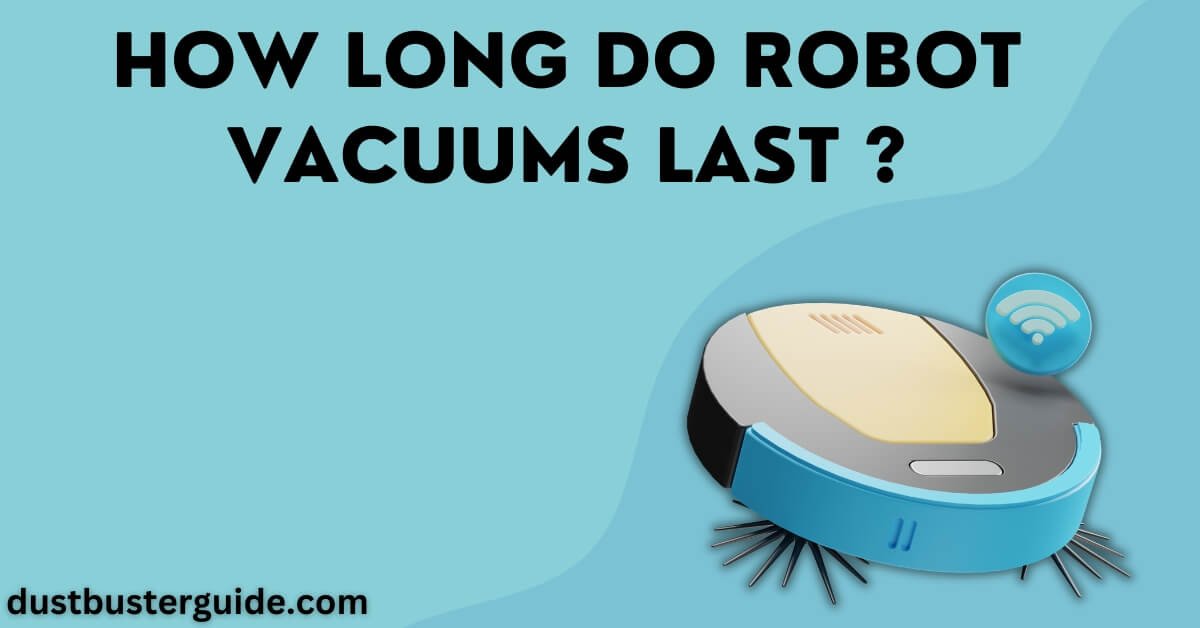You guys love your tiny robot vacuum, don’t you? And why not? This super device has made our lives so much easier. They’re particularly good at keeping up with pet hair, but they can also keep your house neat if you’re just too busy (and they’ll do it better because they don’t mind vacuuming every day). Robot vacuum cleaners do, however, occasionally stop functioning for no apparent reason, just like any other gadget.
And it is the most frequent question among people how long do robot vacuums last? The lifespan of a robotic vacuum cleaner depends on how you utilize and maintain this device. However, a robot vacuum can typically endure between 5 to 8 years. We’ve covered the lifespan of robotic vacuum cleaners below and several methods for extending their life. So let’s learn together by diving in.
What Is A Robot Vacuum Lifespan
Before we inform you about the lifespan of robot vacuums specifically, we would like it if you had a concept of how long do vacuum cleaners last generally.
The brand and type of vacuum cleaners determine how long they last on average. For instance, some vacuum cleaners are Robotic, some are Canisters, some are Upright, and so many more but on average, vacuum cleaners last eight years, depending on the product’s quality. But let’s talk about the vacuum cleaner we are here for; Robot vacuum cleaner.
According to our belief, you get what you pay for. Some high-end, pricey robotic vacuum cleaners last for about 8 years, but on the other hand, the least expensive, lowest-quality model is the robot vacuum that is most likely to last for about 5 years. We have provided you with a guess of the lifespan of a robotic vacuum cleaner, but as we stated in the section above, how long do robot vacuums last completely depends on how you use it, for what purpose you use it, and most importantly, whether you maintain your vacuum cleaner or not.
Therefore, it is crucial to understand what is affecting our robotic vacuum cleaner’s lifespan before we can discuss how to extend its overall lifespan. We have covered this section in great detail below, so let’s continue to learn.
What Are The Factors That Affect The Lifespan Of The Robot Vacuums

The following list includes some factors that have an impact on your robot’s functionality and durability:
- The Brand
- Usage
- Maintenance
The Brand
So, it is the first result you will receive in response to your question, how long do robot vacuums last? The manufacturer greatly influences the vacuum’s durability. Generally speaking, larger branded vacuums with established industry reputations are far superior to the unbranded ones available in some local retailers. Therefore, seek the most renowned or well-known vacuum bands to buy from before you go out and get one for yourself.
iRobot, a well-known manufacturer of robot vacuums, it is also expected that their product will survive longer than any similar unbranded item. In addition, most of these businesses are trustworthy and provide a warranty period to guarantee the high caliber of the device’s operation.
Usage
A robot vacuum cleaner’s usage is another factor influencing its lifespan. The cleaning tool’s effectiveness will decline as you use it more frequently due to some wear and tear. If you use your robot vacuum often, there’s a chance that it will eventually stop working as well.
The second consideration is how you intend to utilize your robot vacuum, including what types of floors and pets you want it to clean. The more surface area you have, the more burden you’ll eventually place on the robot’s entire system. Your best robot vacuum for pet hair may become inefficient if there is too much pet hair, or dust on your carpet, or even if you use it too frequently. The longevity of a robotic vacuum will depend on your lifestyle.
Maintenance
Maintenance is the third and most crucial aspect. The robot vacuum lifespan is most affected or influenced by proper maintenance. Knowing how to handle, operate, and care for the vacuum cleaner and its components can greatly increase the likelihood that it will last longer. Pay attention to issues with your vacuum cleaner’s cleaning modes if they occur. Have them fixed right away. You may discover some techniques to maintain your robot vacuum below to increase its lifespan.
Here, is a table describing the factors affecting the lifespan of robot vacuums.
| Factor | Description |
|---|---|
| Brand | The manufacturer’s reputation and industry standing play a significant role. Well-known brands with established reputations tend to produce more durable products. |
| Usage | The frequency and intensity of usage impact the robot vacuum’s lifespan. Frequent and heavy use can lead to wear and tear, affecting its overall functionality. |
| Maintenance | Proper maintenance practices greatly influence a robot vacuum’s lifespan. Regular care, addressing issues promptly, and following operational guidelines can extend its life. |
How To Extend The Robot Vacuum Lifespan
After learning how long do robot vacuums last, it’s time to discover how to make robots live longer. Am I right? Whether you choose a low-cost or high-end robot vacuum, there are several things to consider, including how to properly maintain it. For consistent cleaning results, the robot vacuum cleaner’s components must be in good working order.
You should replace these components every few months to several years to ensure that your robot vacuum cleaner performs to its full potential:
- Brushes (Every 6 Months)
- Battery (2 years)
- Filters (Every 3 to 6 Months)
- Sensors (2 Years)
- Base Station and Bin (When Needed)
- Motor (When Needed)
Brushes (Every 6 Months)
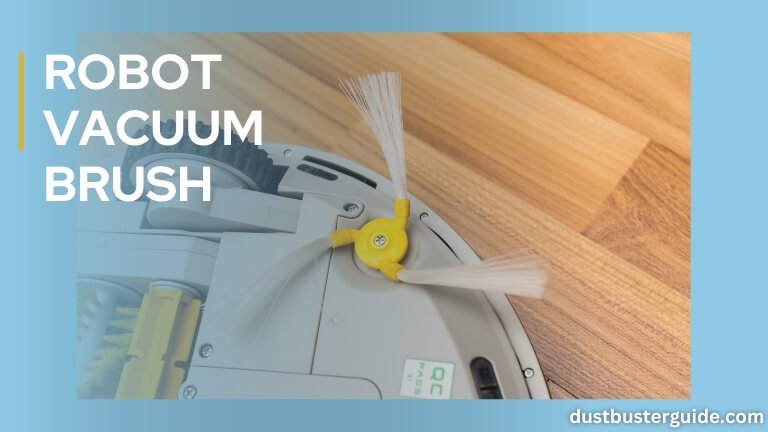
The bristle brush is typically the first component of a new robot vacuum to exhibit wear and tear. You may, however, easily and cheaply replace it. The brush roll of a robot vacuum frequently becomes entangled in various fibers, pet hair, or human hair found on the floor or carpet. While these things don’t seem dangerous, they can injure the robotic vacuum cleaner and reduce its lifespan because you will be stressing the motor.
Bristle brushes typically last at least six months in usage. You can replace them as frequently as you’d like if purchasing a new one is not a problem. Make it a point to check bristle brushes after each use to get the most use out of them. You should occasionally clean the brush using compressed air, one cup of water, and 1/4 cup of vinegar, and occasionally have carpet fibers and hair removed with scissors or your hand.
While cleaning the brush, do not harm the vacuum’s bristles because doing so will reduce its capacity to collect waste. It would be wonderful to have an additional brush for your robotic vacuum to replace it if it got too worn out.
Battery (2 years)
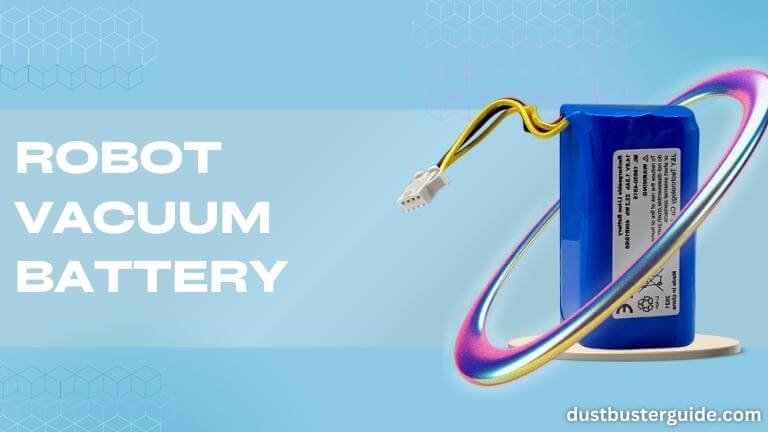
Your vacuum battery is the second component that we are going to talk about here. Even when not in use, rechargeable batteries gradually lose capacity as they get older. However, the battery degrades more quickly under overcharging, overheating, and improper charging cycles. The same holds even if you pack the robotic vacuum away in a box that will be closed for several weeks; the battery will naturally deplete while in storage and may eventually run out of power.
Before the battery drains, it’s crucial to recharge the robot vacuum or any other rechargeable gadget. Although the battery parts of robot vacuums are typically built-in, they are relatively easy to repair. Batteries typically last for at least two years before you need to replace them. If the robot vacuum’s other components are undamaged, a fresh battery will restore it to factory condition. Therefore, if you use your robot for extended periods, it is crucial to promptly change its battery.
Filters (Every 3 to 6 Months)
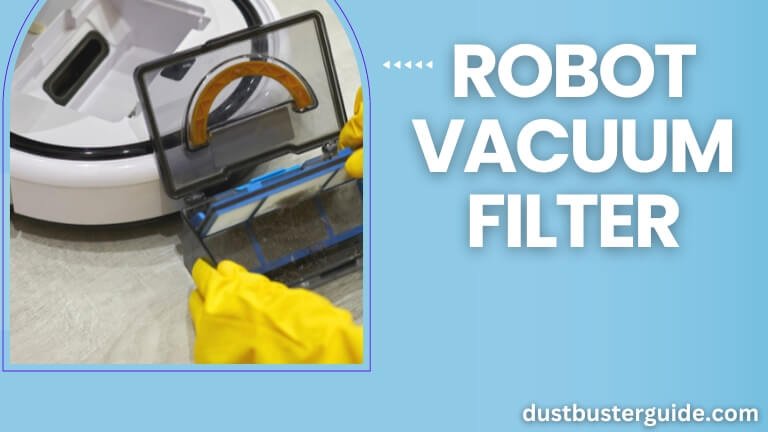
Robotic vacuum cleaners frequently come with a washable, reusable filter. As they prevent dirt and grime from damaging the engine and returning to the atmosphere, the filter is the most important part of a robot vacuum.
You must therefore clean the filter every three to four weeks. If not, the vacuum’s airflow can clog, putting the air in the room and the vacuum at risk, which would shorten the life of your vacuum. Remember you shake or tap the filter to clean it. Since the robot vacuum should not touch any liquid, avoid washing the filter and refrain from using any liquid to clean it. Otherwise, its motor would suffer significant damage.
If you can see that the robot vacuum filters have too much dust, clean them immediately. Blocking filters will decrease the vacuum’s effectiveness and lead to dust buildup inside the machine. In addition to cleaning, depending on the type of filter, you should change it every three to six months. However, if you clean it properly, you can extend the filter’s life as long as the fibers remain intact.
Sensors (2 Years)
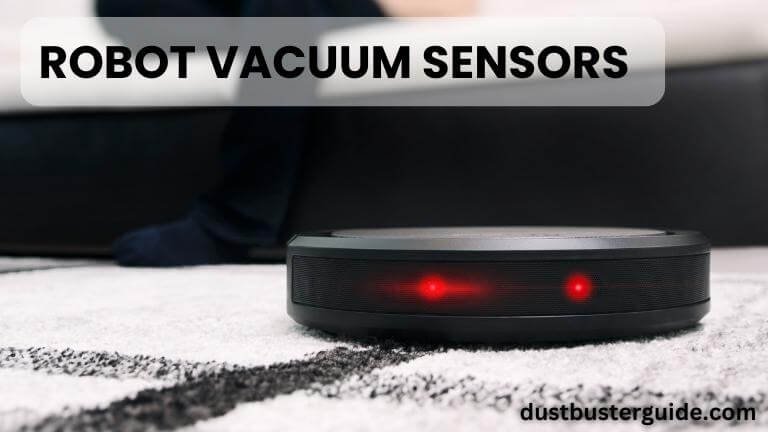
We also want you to understand the significance of sensors in extending the life of your robot vacuum cleaner. If a layer of dust starts to cover the sensors, you must wipe them with a slightly dampened piece of melamine foam. The robot vacuum cannot detect objects and materials properly if a sensor malfunctions.
There will also be dust buildup inside the robot vacuum, whether you like it or not. Request a cleanup if you’ve sent your robot for maintenance or battery replacement to prevent heating parts. You must make sure to change The sensors in your vacuum every two years.
Base Station And Bin (When Needed)
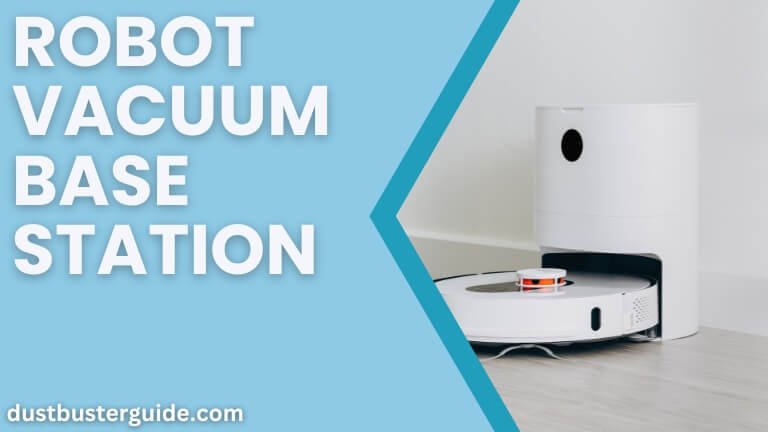
Even if your vacuum cleaner is premium, you still need to empty the dustbin. To prevent any issues and disruptions to the cleaning operation, do it even before it is full. If it has a dust bag in place of that, make sure to empty it after each usage to avoid blockages and overheating. Similarly, periodically check the contacts on the base station for a charge. If dust has accumulated, gently clean the surface with a melamine foam or cloth that has been slightly dampened.
Motor (When Needed)
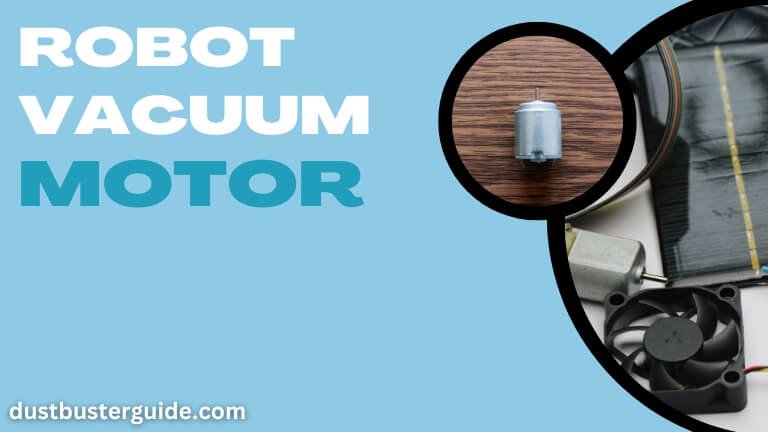
Any approved robot vacuum cleaner’s motor should continue functioning flawlessly after the expired warranty. Send it in for repair or replacement if something goes wrong with it within the warranty period. Let’s say the internal vacuum cleaner motor malfunctioned after the manufacturer’s warranty had run out. The decision to repair or replace it then rests with you.
Bad components, such as a transistor or diode, are the most frequent causes of robot vacuum motors not operating. An old robot vacuum may start making “clicks,” emitting a burning copper wire odor, or just not turning on. Only a trained expert should be able to fix it; only they can tell you whether your vacuum needs some fixation or replacement. Before you make any purchases, think about whether it’s more cost-effective to extend the life of your robot vacuum or finally get a new one.
Other Accessories That Need Replacement
We are confident that you will successfully extend the lifespan of your robot vacuum because you are aware of the maintenance information for all of its vital parts. In addition to the parts we just stated, your robot vacuum cleaner may require you to replace its additional accessories to increase its overall longevity. Check those out:
- As soon as the side brush becomes worn, you should replace it. If you maintain it properly, it might not be due for another six to twelve months.
- Middle rubber roller brushes may eventually become worn out depending on how frequently they are used. You can replace them as you see fit.
- Replace the boundary tapes every five years or as soon as they are inadvertently damaged.
- Clean the vacuum covers when they become dirty or replace them for special occasions.
Important Cleaning Routine Before Use Of Robot Vacuum

Your adorable tiny robot vacuum is your fantastic cleaning helper. However, you should still clean it up before delivering it to the workplace. Here are some crucial cleaning routines for your robot vacuum that can help you increase its lifespan:
- Swipe or rapidly pick up the tiniest rubbish you can manage, as these are everything but dust, which might result in faulty construction or ineffective cleaning.
- Additionally, ensure to cover electrical wires properly or move them out of the way of the robot vacuum cleaner to avoid damaging the covering.
- Above all, before operating your robot vacuum again, double-check to ensure that you have done all the general maintenance the last time you used it.
One Last Thing, Avoid Extreme Temperatures
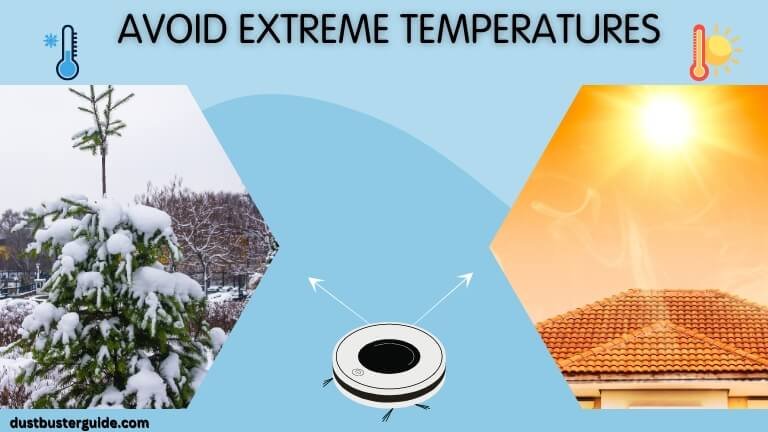
We are certain that we have provided you with practically all the information you need to extend the life of your robot, but there is one more thing we want you to be aware of:
The robot vacuum cleaner’s battery and other delicate components can be damaged by extreme heat or cold. Make sure the base camp is not located near any heating vents or particularly sunny places while choosing a spot. You should not keep the robot vacuum cleaners in the garage or attic because these spaces frequently don’t have enough insulation to withstand severe temperatures. So be careful not to put yourself in this scenario with your vacuum.
Can Robot Vacuums Survive Long-Term Use Or How Long Do Robot Vacuums Last
Since robot vacuums are relatively new, it is impossible to say how long they should last. Take it easy; you are not alone if your favorite robot vacuum dies on you unexpectedly. Cheaper devices from questionable brands have been known to quit functioning completely without warning.
Robot vacuums have a shorter lifespan than the dependable canister vacuums of the past, even with an average lifespan of 5 to 8 years. Some models have the endurance to work consistently and diligently for 20 years before retiring.
Lithium-ion rechargeable batteries power some robot vacuums. Similar to iPhones, it is advised to replace the batteries every two to three years to maintain the device operating efficiently. However, it is true that with good care and maintenance, your robot vacuum might survive longer than you had anticipated, just like the canister vacuums.
How Can I Tell When To Replace My Old Robot Vacuum

The question here is how you will know when it’s time to replace your old robot vacuum with a new one because, as we noted above, with appropriate care, you can expect your robot vacuum to survive longer than its typical life span. So, let’s dig into that and see when you’ll know:
In some circumstances, even when your vacuum cleaner is already older than its predicted lifespan, you don’t always need to replace your vacuum. Only if it is constantly in need of repair or if your vacuum cleaner doesn’t perform as you would anticipate it to perform.
- Verify that the hoses are not obstructed. Even if hoses are clogged, you must take action to clear the obstruction.
- Replace or clean the air filter since a blocked filter will prevent airflow, which prevents dirt and dust from being picked up.
- You should check the belt drive because it could stretch out or come off its track. Check it frequently to ensure that your device can function properly.
- If doing these things doesn’t enable you to keep your vacuum, you may require an upgrade.
Is There A Lifetime Warranty On Robot Vacuums

Robot Vacuum’s guarantee isn’t unlimited. Fortunately, some manufacturers now provide a limited lifetime warranty for Roomba vacuums. Usually, the vacuum cleaner’s parts, including the battery, are covered by the warranty.
For Roomba vacuums, the warranty normally starts on the day of purchase. Additionally, the vacuum cleaner’s security relies on where you get it. To be eligible for the guarantee, you must present evidence of purchase. Knowing that the guarantee extends to material manufacturing flaws is vital. Additionally, it addresses any quality problems that can arise while using the vacuum. It does not, however, make up for flaws brought on by inappropriate machine usage.
What Are Some Common User-Related Damage On Robot Vacuum Cleaners
Common user-related damage on robot vacuum cleaners can be attributed to various factors. Some typical issues include:
- Obstacles and Clutter: Users often leave objects on the floor that the robot vacuum can get stuck on or collide with. This can lead to damage to the vacuum’s sensors, brushes, or other moving parts.
- Not Cleaning the Vacuum Regularly: Neglecting regular maintenance, such as emptying the dustbin, cleaning brushes, and checking for debris, can lead to reduced performance and potential damage over time.
- Incorrect Cleaning Solution: Using inappropriate cleaning solutions or liquids to clean the robot vacuum can damage its components, including the sensors and the charging dock.
- Ignoring Manufacturer Guidelines: Failing to follow the manufacturer’s guidelines regarding usage, maintenance, and cleaning can result in unintended damage to the robot vacuum.
- Overcharging the Battery: Leaving the robot vacuum on the charging dock continuously can lead to overcharging, reducing the lifespan of the battery and potentially causing damage.
- Using on Unapproved Surfaces: Operating the robot vacuum on surfaces or in environments it is not designed for, such as wet areas or high-pile carpets, can lead to wear and tear or damage.
- Manual Intervention While Operating: Interfering with the robot vacuum’s movement while it’s operating, such as picking it up or pushing it manually, can disrupt its navigation and damage internal components.
- Failure to Remove Tangled Hair or Debris: Hair, strings, and debris can get tangled around the brushes and axles, leading to motor strain or damage if not removed regularly.
- Inadequate Cleaning of Sensors: Sensors are crucial for navigation. If they are not regularly cleaned, their effectiveness can be compromised, leading to collisions and potential damage.
To avoid user-related damage, it’s crucial to follow the manufacturer’s guidelines, perform regular maintenance, and operate the robot vacuum in environments and on surfaces it is designed for. Additionally, addressing issues promptly and seeking professional assistance if needed can help prolong the life and effectiveness of the robot vacuum.
Conclusion
How long do robot vacuums last entirely depends upon its maintenance. However, the observed lifespan of a robot vacuum is 5 to 8 years. Aim to extend your product’s lifespan if you want to get the greatest performance possible from it. You may permanently increase the lifespan of your cleaning partner by replacing its internal parts and accessories. Considering the brand of the cleaning tool is also crucial because a branded product is made with the highest-quality supplies and tools. You can be certain that the product you purchase from your source will be more durable and effective with these.
FAQs
Are robot vacuum cleaners worth the money?
Most of the time, they are worthwhile, depending on your needs and budget. Setting aside some money for a high-quality model for a better investment is always advised.
How often should you use a robot vacuum?
Always consider your preferences and cleaning requirements. However, using the device four to seven times per week is preferable. You may maintain a clean and dust-free atmosphere at home in this way.
Is it worth repairing my Roomba?
Yes, repairing a Roomba is worthwhile. Therefore, hold off on throwing it away and getting a new one. You could browse for a few trustworthy and qualified service providers who can make repairs for you. You can at least avoid paying a large sum for a new Roomba by having them fixed by yourself.
How long does the Shark robot vacuum last?
According to our estimates, a good Shark vacuum should last five to seven years. Even though it is younger than a vacuum’s average age, this is a compromise for the lower price.
Should I run my robot vacuum every day?
Most owners think vacuuming the floors with their robot vacuums four times per week is enough to keep your floors free of dust. However, you should use your robot vacuum more frequently if you have kids or pets. If you have seasonal allergies, you should vacuum every day.
Why do vacuums always break?
Vacuums may break due to various reasons, including wear and tear, lack of maintenance, poor build quality, or misuse. Regular cleaning, proper maintenance, and choosing a reliable brand can help extend the lifespan of a vacuum.
How do I choose the right car vacuum cleaner?
To choose the right car vacuum cleaner, consider factors such as suction power, cord length (or battery life for cordless models), compact design, attachments for tight spaces, and ease of storage. Opt for a model that suits your car cleaning needs and is known for durability.
External Resources
- Comparing The Recommendations Of Buyers Of Energy-Efficient And Inefficient Vacuum Cleaners – MDPI
- The Best Robot Vacuum You Can Buy Right Now – The Verge
- The Design Methodology To Develop New-Generation Universal-Motors For Vacuum Cleaners – IEEE Xplore
- The Effect Of Vacuum Cleaners On The Concentration And Particle Size Distribution Of Airborne Cat Allergen – The Journal of Allergy and Clinical Immunology

